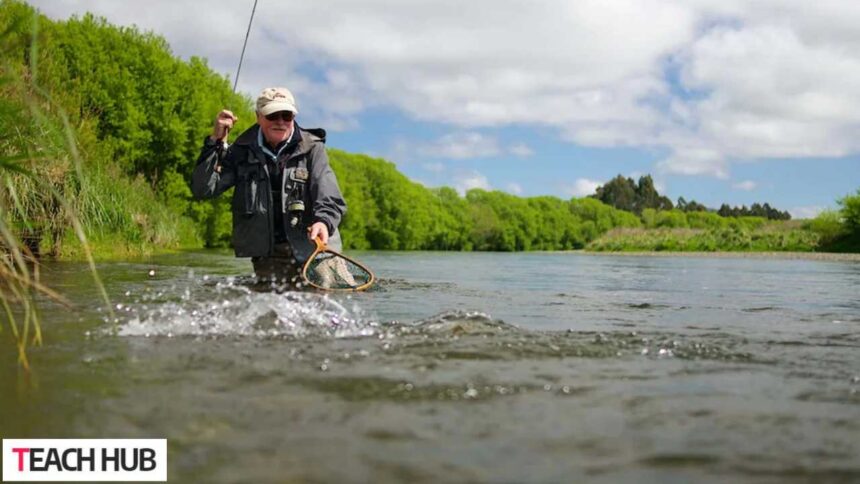Fiskning offers a sustainable alternative to conventional fishing practices that often prioritize quantity over environmental impact. Unlike methods that can harm marine ecosystems, fiskning embodies a harmonious approach rooted in Scandinavian tradition. It aims to safeguard aquatic life for future generations, ensuring our waters remain healthy and thriving.
Embracing fiskning means adopting techniques that respect nature while enjoying the art of fishing. This method combines ancient wisdom with modern innovations, promoting sustainable practices that preserve marine biodiversity and support local communities dependent on fishing.
Let’s explore how fisking not only enhances your fishing experience but also contributes to the long-term health of our oceans. Discover the techniques, benefits, and global destinations of fishing in detail below.
What is Fiskning?
Fiskning is a sustainable fishing method deeply rooted in Scandinavia, renowned for its focus on minimizing environmental impact and preserving marine ecosystems. This traditional practice goes beyond catching fish; it embodies a cultural reverence for nature, passed down through generations.
Fiskning techniques are designed to sustain fish populations and maintain the health of aquatic environments, reflecting a holistic approach to fishing that balances tradition with ecological stewardship. Its historical significance lies in its role as a vital aspect of Scandinavian culture, where respect for natural resources and sustainable living have shaped community identities for centuries.
Key Differences from Conventional Fishing
Fiskning stands apart from conventional fishing methods in several key ways, particularly in its emphasis on sustainability, minimal environmental impact, and distinct fishing objectives. Unlike traditional methods that prioritize maximizing catch volumes, fiskning focuses on sustainable practices that ensure the long-term health of marine ecosystems.
It employs selective fishing techniques that minimize bycatch and avoid harming non-target species, promoting biodiversity conservation. Moreover, fishing aligns fishing objectives with ecological preservation, aiming to maintain fish populations for future generations rather than depleting them.
This approach contrasts sharply with conventional methods, which can contribute to overfishing and habitat destruction, underscoring the holistic and environmentally conscious principles of fisking.
Techniques and Philosophies
Fiskning adopts an eco-conscious approach by employing techniques that prioritize the preservation of marine life and promote conservation efforts. This method emphasizes selective fishing practices, such as using specific gear and targeting only mature fish populations.
By minimizing bycatch and avoiding the capture of non-target species, fiskning reduces unnecessary harm to marine ecosystems. Additionally, practitioners of fisking often adhere to catch-and-release principles and respect no-catch zones, further safeguarding biodiversity.
Beyond minimizing environmental impact, fiskning actively supports biodiversity and ecosystem health. By maintaining balanced fish populations and preserving habitat integrity, this sustainable fishing practice helps sustain marine biodiversity.
Healthy fish stocks contribute to ecosystem resilience, benefiting not just aquatic life but also the communities dependent on these resources. Overall, fiskning’s philosophies align with sustainable development goals, ensuring that fishing activities contribute positively to environmental conservation and long-term resource management.
Also Read: Pi Network’s Puzzling Code and the Significance of 314159u
Benefits of Sustainable Fishing Practices
Sustainable fishing practices play a crucial role in safeguarding our oceans and preserving marine biodiversity. By adopting sustainable methods, such as managing fish stocks responsibly and minimizing environmental impact, we can help maintain healthy marine ecosystems.
This approach ensures that fish populations are harvested at sustainable levels, preventing overfishing and preserving biodiversity for future generations. It also protects the habitats and food sources of marine species, contributing to the overall health of ocean ecosystems.
Economically and socially, sustainable fishing practices offer significant benefits to coastal communities. They support livelihoods dependent on fishing by ensuring stable fish populations and reliable incomes. Healthy marine environments attract eco-tourism, boosting local economies and providing alternative sources of income.
Moreover, sustainable fishing practices promote community resilience against environmental changes and economic uncertainties, fostering sustainable development and enhancing the well-being of coastal societies. By prioritizing sustainability, we not only protect marine resources but also promote the long-term prosperity of coastal communities worldwide.
Integration of Modern Technology
Modern technology, such as GPS and sonar, plays a pivotal role in enhancing traditional fiskning methods by improving precision and efficiency. GPS enables anglers to pinpoint exact fishing locations, track movements, and mark successful spots for future reference. This technology reduces unnecessary time spent searching for fish, minimizing disturbance to marine habitats.
Sonar technology enhances fiskning by detecting fish underwater through sound waves, providing real-time data on fish presence, depth, and habitat structure. This allows fishermen to make informed decisions, target specific species, and avoid areas with vulnerable marine life, thus reducing unintended environmental impacts.
Innovations in fishing gear also contribute to sustainability by minimizing ecological footprints. Biodegradable fishing lines and hooks reduce marine debris and harm to wildlife if lost. Selective gear designs target specific fish sizes and species, reducing bycatch and ensuring sustainable fishing practices.
Electronic tagging systems monitor fish populations without physical harm, aiding in conservation efforts and supporting ecosystem health. These technological advancements not only improve fishing efficiency but also align with fiskning’s principles of environmental stewardship and conservation.
Also Read: A Look at Spartan Capital Securities LLC Broker Jordan Meadow
Fiskning Destinations: Top Spots Around the World
Here are some of the top fishing destinations around the world that offer exceptional experiences for anglers:
North America
- Alaska, USA: Renowned for salmon and halibut fishing.
- Florida Keys, USA: Excellent for inshore and offshore fishing.
- British Columbia, Canada: Famous for salmon and trout fisheries.
Europe
- Norway: Known for cod, halibut, and sea trout fishing.
- Scotland: Fantastic for salmon and trout fly fishing in rivers and lochs.
- Spain: Offers diverse fishing opportunities, including carp and catfish.
Asia
- Thailand: Popular for freshwater fishing in lakes and rivers.
- Japan: Unique experiences like ice fishing and deep-sea fishing.
- Maldives: Big game fishing for marlin and tuna.
Australia and Oceania
- New Zealand: World-famous for trout and fly fishing.
- Australia: Diverse opportunities from barramundi in the north to tuna in the south.
- Fiji: Pristine waters and abundant marine life for various fishing adventures.
How to Practice Fiskning?
Practicing fiskning effectively involves using the right gear and mastering sustainable techniques suitable for both beginners and experienced anglers.
Essential Gear and Equipment for Fiskning
- Fishing Rods: Choose rods based on the fishing environment and target species—lighter rods for freshwater, heavier for saltwater or deep-sea.
- Baits: Opt for natural baits like worms or minnows, minimizing ecological impact and effectively attracting local fish species.
- Reels: Select reels that match rod weight and fishing conditions, ensuring smooth line retrieval and control.
- Lines: Use quality lines appropriate for fishing depth and species, considering durability and minimal environmental impact.
Techniques for Sustainable Fishing
- Catch-and-Release: Handle fish with care to minimize stress and injury, ensuring their safe return to the water.
- Selective Fishing: Target specific species and sizes, avoiding non-target or protected fish to reduce bycatch.
- Respect No-Catch Zones: Adhere to regulations protecting vulnerable habitats and breeding grounds.
- Use Biodegradable Gear: Opt for eco-friendly hooks and lines that degrade harmlessly if lost, minimizing marine debris.
Mastering these techniques and using appropriate gear not only enhances fishing success but also supports fiskning’s commitment to sustainable practices, ensuring enjoyable and responsible fishing experiences for all anglers.
(FAQs)
What is fiskning?
Fiskning is a sustainable fishing practice rooted in Scandinavian culture, focusing on minimizing environmental impact while preserving marine ecosystems. It blends traditional fishing techniques with modern innovations to ensure the long-term health of aquatic environments.
What is the historical significance of fiskning?
Fiskning has deep cultural roots in Scandinavia, dating back centuries as a vital part of coastal communities’ livelihoods. It reflects a traditional ethos of respecting nature and sustainability, passing down knowledge of responsible fishing practices through generations.
How has technology influenced fiskning?
Modern advancements like GPS and sonar have revolutionized fiskning by improving precision in locating fish and reducing unintended environmental disturbance. Innovations in gear, such as biodegradable materials and selective fishing tools, further enhance sustainability efforts.
Why is sustainability important in fiskning practices?
Sustainability ensures that fishing activities do not deplete fish populations or harm marine habitats. By using selective techniques and respecting conservation measures, fiskning supports biodiversity and promotes healthy ecosystems for future generations to enjoy.
Conclusion
Fiskning stands out as a sustainable fishing practice that preserves marine ecosystems and promotes responsible angling. By prioritizing conservation and using eco-friendly techniques, fiskning ensures healthy fish populations and supports coastal communities.
Looking ahead, advancements in technology, like GPS and biodegradable gear, will further enhance fiskning’s effectiveness and reduce environmental impact.
As awareness of sustainability grows, fiskning will continue to evolve, fostering a harmonious balance between fishing traditions and environmental stewardship.
By adopting these principles, we can ensure that future generations can enjoy fishing while protecting our oceans.
Also Read: World of Jack and Jones: Your Ultimate Style Guide



